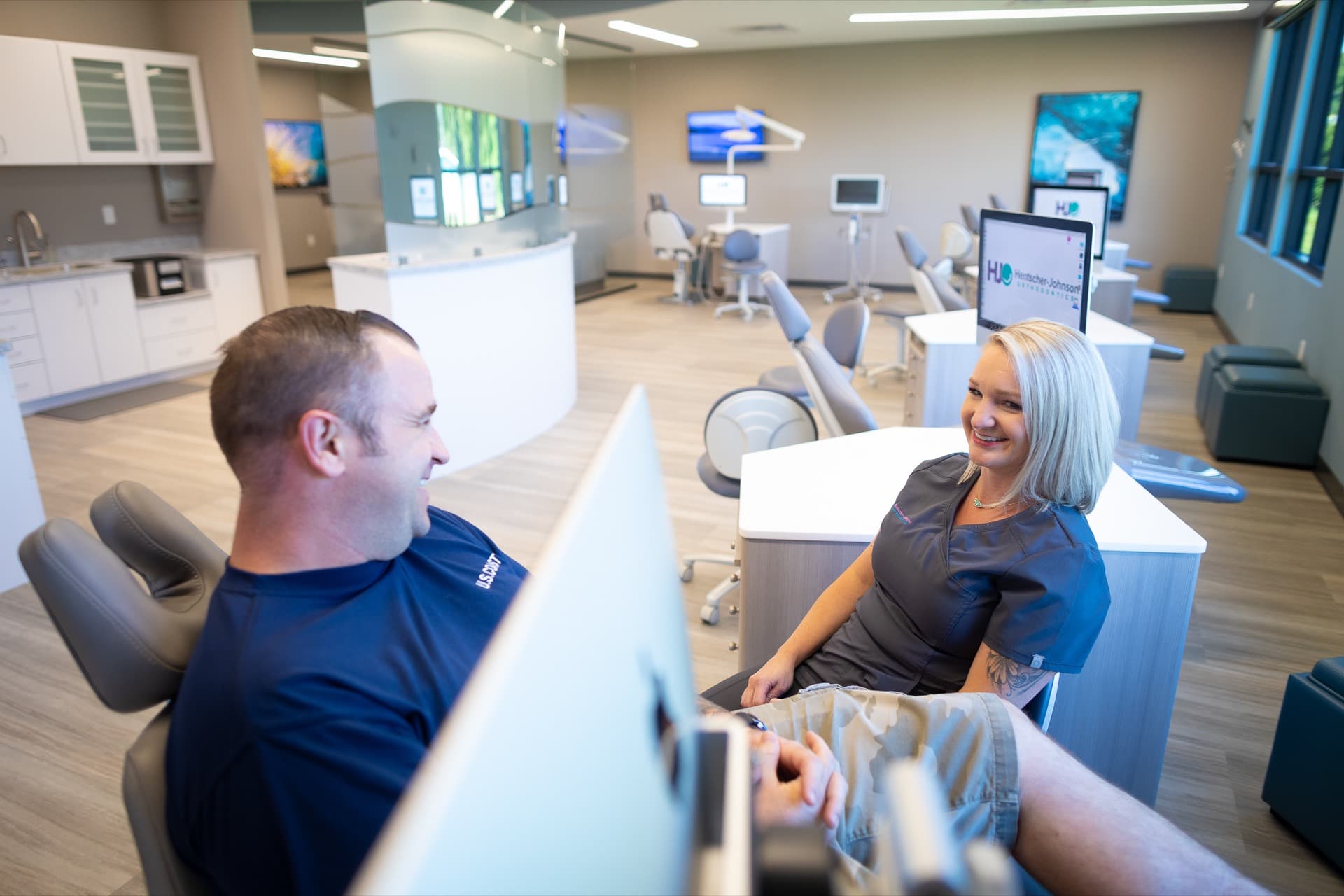Palate Expanders: Do They Hurt, and How Will They Help?
Some patients have crowded teeth because their dental arch — the U shape of their teeth — is too narrow. You may think nothing can be done about that, but your orthodontist has a way to fix that problem and straighten your teeth. It’s called a palate expander.
At Hentscher-Johnson Orthodontics, we have lots of tools to repair dental problems. Most people think our only options to repair teeth are with braces or Invisalign, but that isn’t the case. From palate expanders to spacers to tongue cribs, we have ways to fix your dental problems and set you on the path to the smile you’ve always wanted. So what is a palate expander, and how do we use it to help repair your teeth? Let’s take a look at this unique orthodontic tool.
Traditional metal braces are the most common type of braces and are more comfortable today than ever before. Made of high-grade stainless steel, metal braces straighten your teeth using metal brackets and archwires. With metal braces, you have the option of adding colored elastics (rubber bands) for a more unique and colorful smile.
What Is a Palate Expander?
The palate is the roof of your mouth, so a palate expander is pretty much what it sounds like — it widens the roof of your mouth, which widens the dental arch of your upper jaw. The palate expander, or palatal expander, allows more space for your upper teeth. This works best with small children whose palate hasn’t fused together in the middle yet. However, it does work with adults. It just may take a little longer.
There are three main types of palate expanders:
- Rapid Palate Expander (RPE): This is often used on youngsters with unfused palates to widen the jaw faster than other options.
- Maxillary Skeletal Expansion (MSE) or Miniscrew-Assisted Rapid Palate Expander(MARPE): This is often used as a palate expander for adults whose palate bones are already fused and provides palate expansion without major surgery.
- Surgically-Assisted Rapid Palate Expansion (SARPE): This requires surgery and is only used in severe cases.
How Does a Palate Expander Work?
The palate expander attaches to the two back molars on the upper jaw or two posts implanted in the jaw. It rests on the roof of the mouth between the back teeth. The device has wires on either side that push against the back teeth.
How do you turn a palate expander? The palate expander has a joint in the center and a hole for an expander “key.” The key is inserted once daily and turned, pushing the wires against the teeth more. This slowly moves the teeth outward and expands the roof of the mouth.
Do Palate Expanders Hurt?
You will probably have some discomfort right after we implant the posts for your palate expander or after we add the expander itself. The good news is that discomfort should disappear after a week.
You may feel mild pressure or discomfort the first few days of turning the key. After that, your mouth will get used to the expander, and you shouldn’t have any pain.
Are Palate Expanders Necessary?
Why do you need a palate expander? A narrow palate can cause a host of problems beyond just crooked teeth. You can have speech problems and breathing problems, as well.
What problems do palate expanders solve? Here are a few examples.
- Crossbite: This is why the upper teeth sit inside the lower teeth instead of slightly outside as they should. The palate expander moves the teeth outward.
- Crowding: A palate expander widens the jaw and makes more room for the teeth, so crowded teeth have enough space to come in straight or be straightened by braces or clear aligners.
- Impacted Teeth: In some cases, teeth that don’t have room to come in properly get stuck in the jaw or above the tooth line. These are impacted teeth. A palate expander makes room for these teeth to drop into their proper places.
- Speech Issues: The tongue has no room to move with a narrow palate, which can cause speech impediments. Crooked teeth can also cause issues with tongue placement.
- Breathing Issues: A narrow palate usually means narrow nasal passages, too. This could make breathing harder and lead to snoring and sleep apnea. Widening the palate can widen the nasal passages, too, making breathing easier.
Does a Palate Expander Change Face Shape?
The palate expander doesn’t change the look of your face by itself. If you get a palate expander in preparation for orthodontic treatment, you will notice a change to your child’s face after braces or clear aligners.
What you may notice after the palate expander is that your child breathes easier and can speak better. A wider palate may eliminate mouth breathing, reducing halitosis and bacteria that cause tooth decay.
Palate Expanders in Columbia, IL and Waterloo, IL
Is your child a good candidate for a palate expander? The best way to find out is to schedule a free consultation with Hentscher-Johnson Orthodontics if you are in the Columbia, IL, or Waterloo, IL, area. We’ll be happy to examine you or your child and let you know if a palate expander is the best way!









